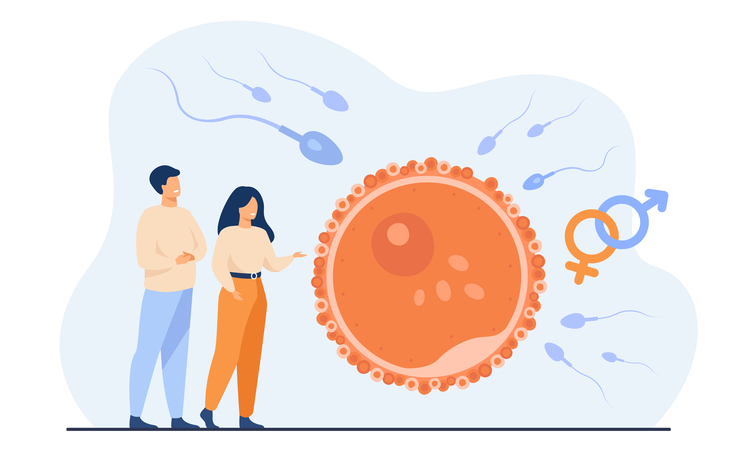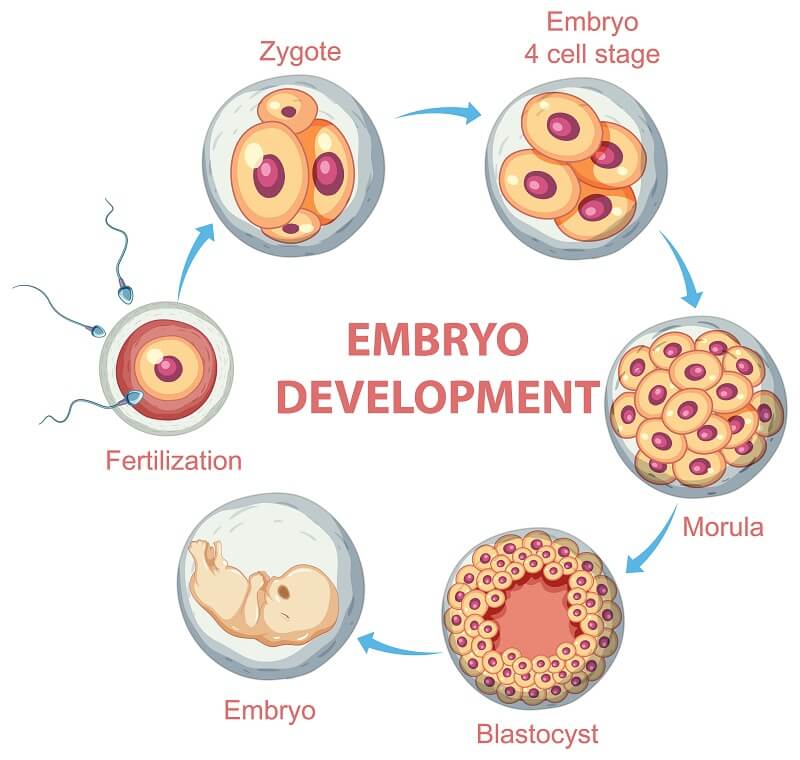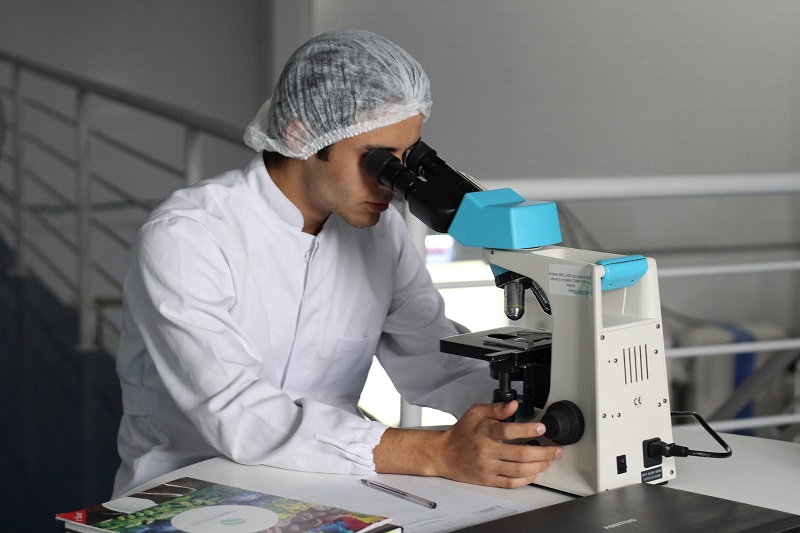Many of you come to us for a happy parenthood via IVF (ICSI). During the process we help you create embryos by fertilizing eggs with sperm in the lab. But not all embryos are healthy enough to result in a pregnancy. So how do we ensure a successful pregnancy?
Whether you’re seeking the best IVF center or working with an IVF specialist, knowing about embryo grading can empower you in your fertility journey.
We are here to talk about the process called Gardner Embryo Grading and more…and simple words for your deeper understanding.
What is Embryo Grading and Why is Embryo Grading Important in IVF?

Embryo grading in IVF (in vitro fertilization) is like checking the health of tiny seeds before planting them. It helps doctors identify which embryos have the best chance of growing into a healthy baby.
Embryologists use grading systems such as the Gardner Embryo Grading System to assign grades based on embryo quality. These grades help determine the best embryos for transfer or cryopreservation for future use, such as in a frozen embryo transfer.
During grading, experts look at factors like the number of cells, their shape, and if there’s any damage. Later, they check if the embryo has formed the right parts to attach to the womb.
By picking the strongest embryos, grading improves the chances of pregnancy and reduces the risk of complications, making IVF more successful.
Now let us share the embryo development in IVF in simple words.
Embryo Development Stages:

When we do IVF, the embryo grows step by step over 5 to 6 days. Let’s break it down:
Day 1 – Fertilisation:
We collect the eggs from the woman and mix them with sperm in the lab. If fertilization happens, the egg and sperm combine their genetic material. Under the microscope, if we are able to see two tiny bubbles inside the fertilised egg—this shows it’s ready to grow. And we move to the next step.
Days 2-3 – Cleavage Stage:
The fertilized egg starts dividing into smaller cells, like cutting a pie into pieces. By Day 3, a good embryo usually has about 6–8 cells of equal size. We also check if the cells are neat and not messy (this is called checking for “fragmentation”). The neater and more even, the better the embryo.
Day 4 – Morula Stage:
By now, the embryo looks like a small, tight ball of cells which is called Morula in medical terms. These cells are sticking together, getting ready to decide their future roles – some will become the baby, and some will support the baby by forming the fluid around it when they move to the mother’s womb.
Days 5 and 6 – Blastocyst Stage:
The embryo grows into a blastocyst, which is like a tiny balloon with two important parts namely the Inner cells (ICM) whic create your baby by furthe growth. And the Outer cells trophectoderm) which form the placenta that connects the baby to them mothers and helps feed the baby. We check how big and strong the blastocyst is and if both parts look healthy.
Now you may ask us – Why These Steps Are Important? At each stage, we monitor the embryo to see how well it’s growing. Healthy development during these stages is a sign the embryo is ready to be placed in the uterus or frozen for later. Each step increases your chances of having a successful pregnancy.
Must Read: What to Do and What to Avoid After Embryo Transfer?
Understanding How We Grade Embryos:

1. Cleavage Stage (Days 2-3):
On the second or third day after fertilization, the embryo has divided into a few cells, like 4–8 little building blocks. At this stage, we look at the number of cells.
Healthy embryos usually have 6–8 cells by day 3. Then we look at the size of cells. All the cells should be about the same size.
If they’re uneven, it might affect development. At this stage lastly, if all is well, we look at fragmentation which means sometimes, tiny pieces of the embryo break off. Think of it like crumbs falling while cutting a loaf of bread. A little fragmentation is okay, but too much can make it harder for the embryo to grow into a baby. We prefer embryos with fewer fragments.
2. Blastocyst Stage (Days 5-6):
By day 5 or 6, the embryo has grown into a hollow ball of cells called a blastocyst. Here, we check the inner cell mass, which is that group of cells which will become the baby. We grade it based on how many cells are present and how neatly they’re packed.
Then we check the outer cells (trophectoderm). These cells will form the placenta as shared above. We grade this based on how even and healthy the cells look.
Gardner’s Grading System:
The Gardner Grading System is a common way to assess blastocyst quality in IVF. It looks at three main things: how much the blastocyst has expanded, the quality of the inner cell mass (ICM), and the outer layer called the trophectoderm (TE). The expansion score ranges from 1 (early blastocyst) to 6 (fully hatched). The ICM and TE are graded with letters: A means the best quality, B is good, and C indicates lower quality
Explanation of Scoring Criteria: Grading Symbols (E.G., A, B, C) And What They Indicate:
Embryo grading helps doctors decide which embryos are most likely to result in a successful pregnancy. It’s done at two stages – at Day 3 and Day 5 of embryo development.
Day 3 Grading
- Grade 1 (A) = Perfect embryos, with no fragmentation and cells are evenly shaped.
- Grade 2 (B) = Good embryos, with slight fragmentation but mostly symmetrical.
- Grade 3 (C) = Poor-quality embryos, with a lot of fragmentation and uneven cells.
- Grade 4 (D) = Very poor-quality embryos with excessive fragmentation, making them unlikely to succeed.
Day 5 Grading (Blastocyst Stage)
Expansion Score (1-6) – This tells how much the blastocyst has grown. The higher the number, the better.
Grade 1 means the Embryo has not expanded while Grade 6 means it is Fully hatched.
ICM and TE Quality are graded as A, B, C
- A = High-quality, compact cells, and well-defined.
- B = Good quality but not as compact.
- C = Lower quality, cells are poorly formed
To make it simpler for you, a 5AA embryo is a highly expanded, high-quality embryo, while a 4CC has moderate expansion and lower-quality cells
Differences in Grading Systems Across IVF Clinics:

Grading systems for embryos can differ from one IVF clinic to another. Some clinics may follow more detailed or unique grading methods depending on their specific procedures or technology.
For example, one clinic may prioritise looking at how the cells are dividing and how much fragmentation is happening on Day 3, while another clinic may focus more on how the embryo develops by Day 5 when it reaches the blastocyst stage.
Each clinic’s grading approach can affect how they assess embryo quality and make decisions about which embryos to transfer.
Factors Influencing Embryo Quality and Grading:
Embryo quality and grading are influenced by various factors:
- The age of the woman, the quality of the eggs and sperm
- The lab culture environment
- The timing of fertilization.
- Additionally, the number of cells, symmetry, and fragmentation in early-stage embryos impact their grade.
- To add on, your lifestyle factors as a couple will also impact the grade. Stress levels, diet, and health conditions can also play a role. For instance, avoid alcohol and caffeine before, during and after the IVF procedures.
CTA:
Whether it’s selecting embryos for immediate transfer or opting for cryopreservation through embryo freezing, grading plays a crucial role in the success of the IVF. Thus, for better chances of success, consult an expert IVF clinic that offers personalized care. Book a consultation today to explore your options.
FAQs:
It helps select the healthiest embryos, increasing the chances of pregnancy and reducing the risk of complications
Embryos are graded based on their cell number, shape, symmetry, and the absence of fragmentation.
This system evaluates blastocyst quality by examining expansion, inner cell mass (ICM), and trophectoderm (TE) quality.
5AA indicates a highly expanded and high-quality embryo, while 4CC suggests moderate expansion and lower cell quality.
On Day 4, embryos reach the morula stage, forming a tight ball of cells preparing for the blastocyst stage.
The ICM forms the baby, while the TE forms the placenta, both essential for a healthy pregnancy.
Fragmentation refers to small pieces breaking off from cells; less fragmentation indicates better embryo quality.
Older women may produce eggs of lower quality, affecting embryo development and grades.
Grade 1 (A) embryos are ideal, while Grade 4 (D) embryos have high fragmentation and lower potential.




